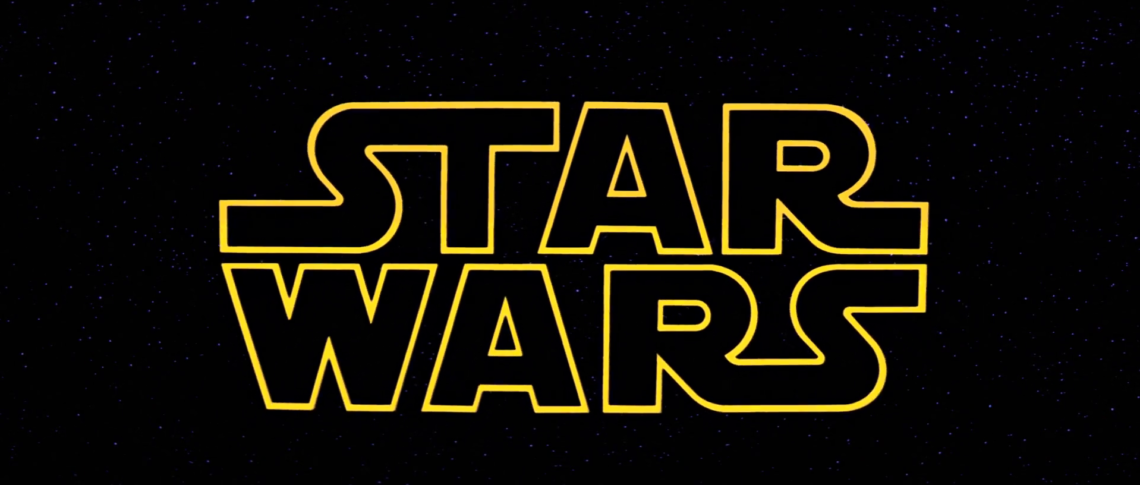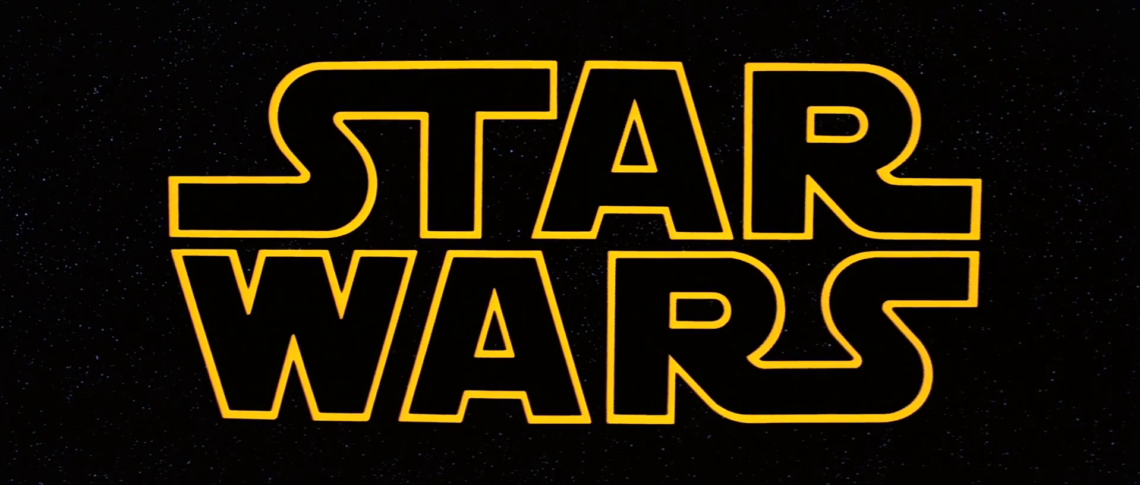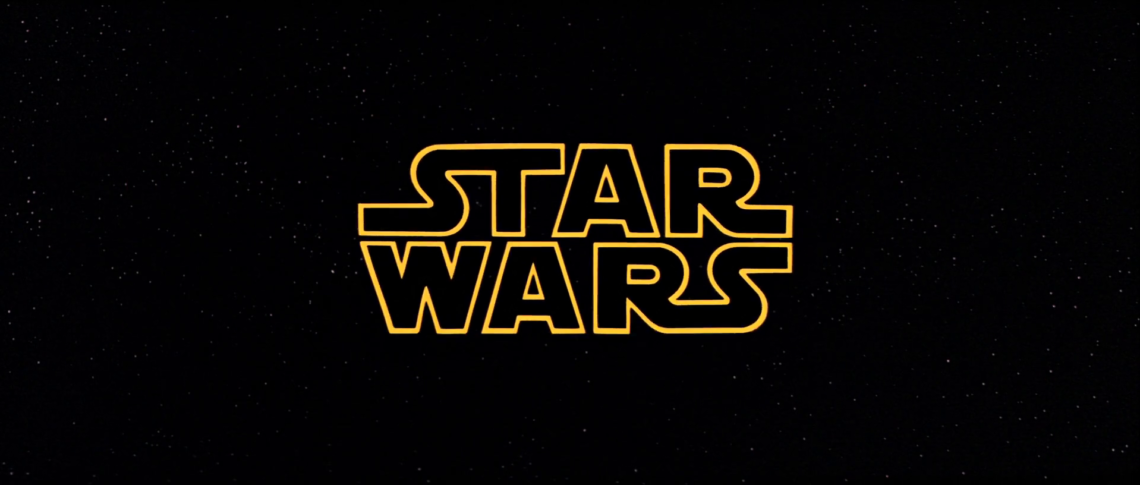-
#508 – Star Wars Episode VI : Return of the Jedi (1983)
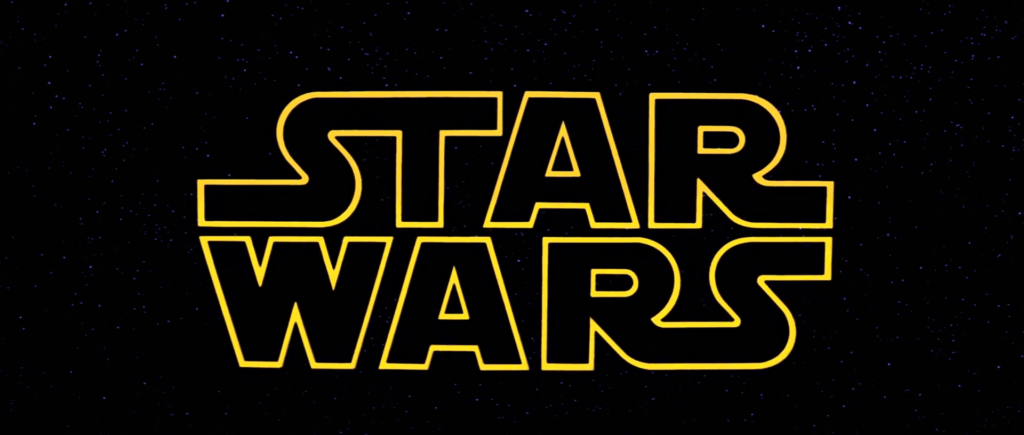
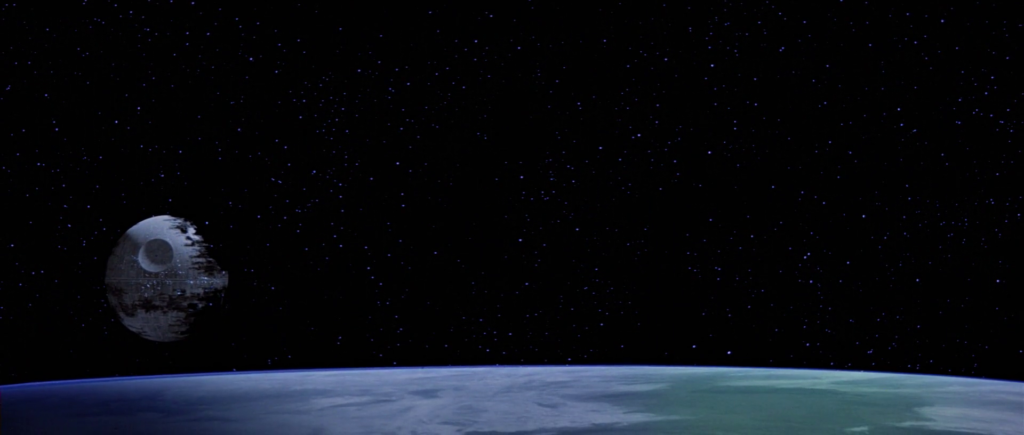
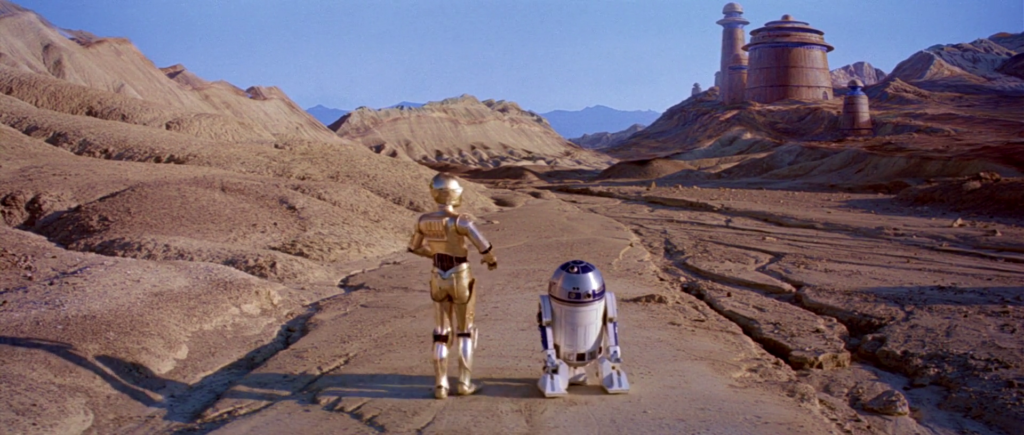
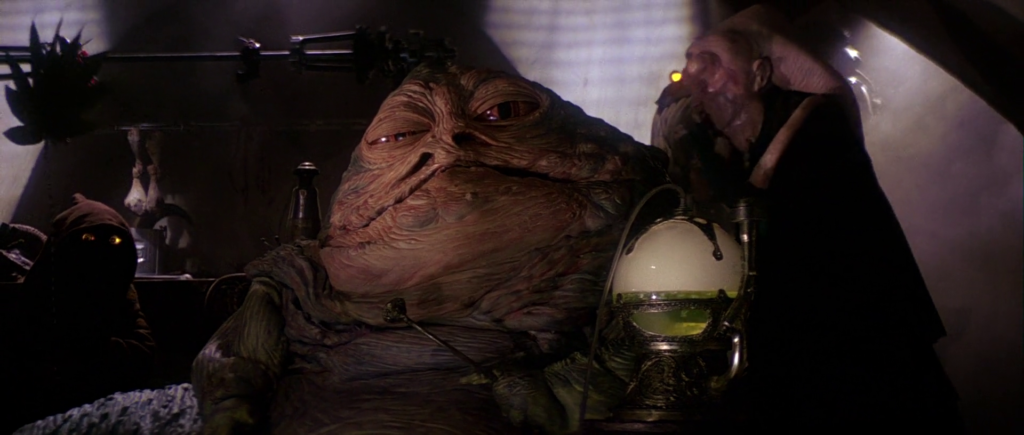
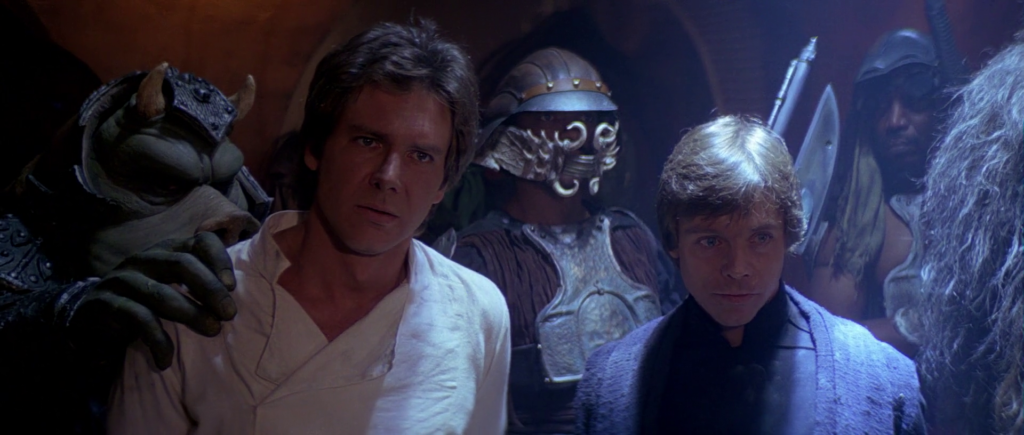

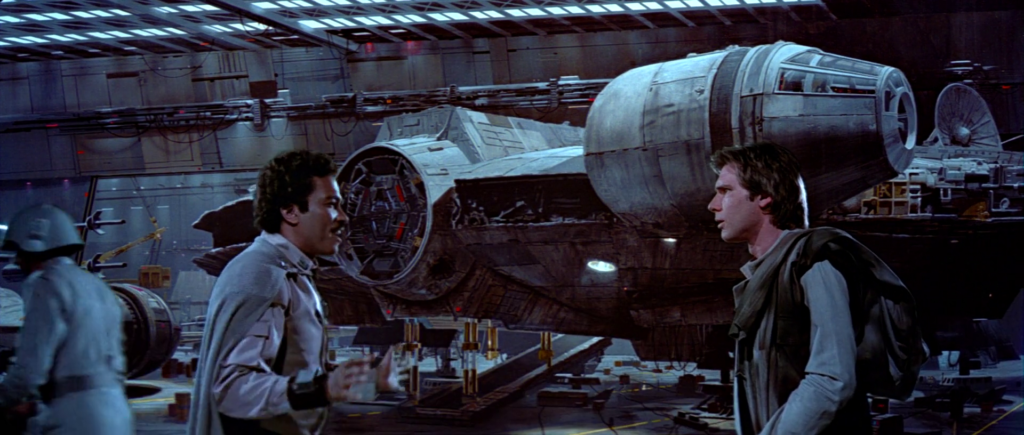
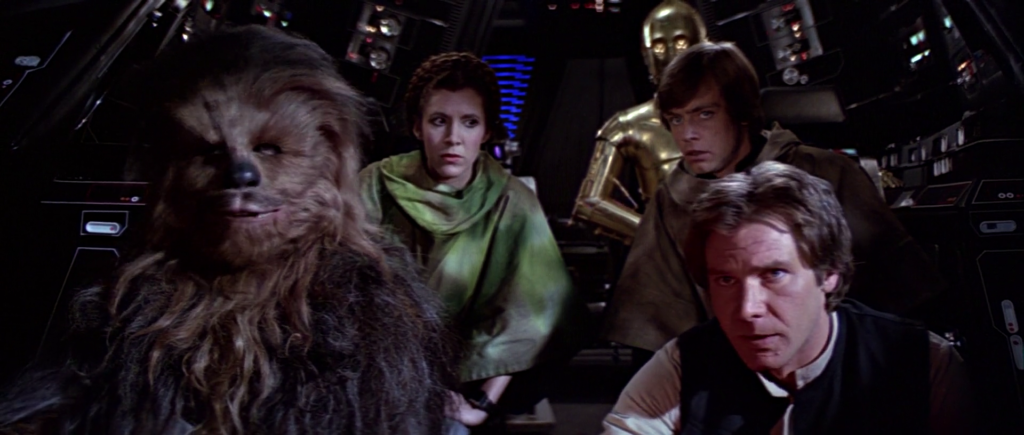
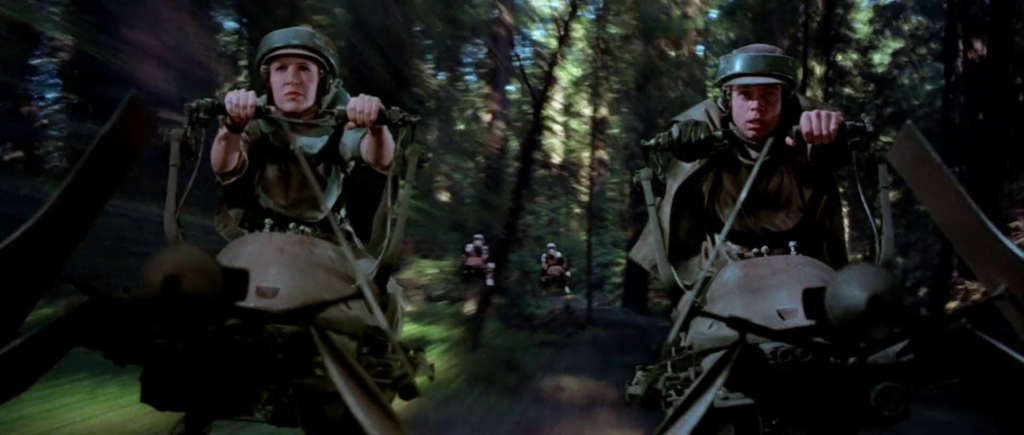
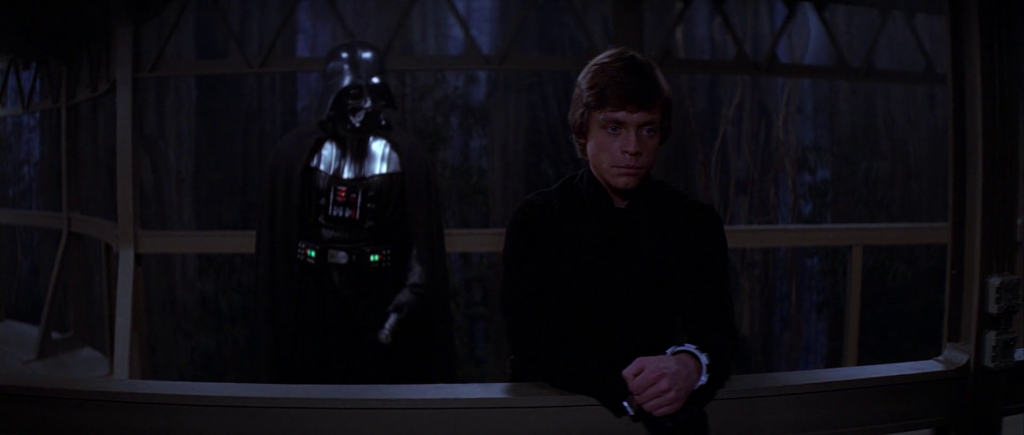
Star Wars Episode VI: Return of the Jedi (1983)
Film review #508
Director: Richard Marquand
SYNOPSIS: Luke Skywalker and his friends attempt to rescue Han Solo from the clutches of Jabba the Hutt, meanwhile, the evil Galactic Empire are busy building a new death star, leading to a battle between the empire and rebels that will determine the fate of the galaxy…
THOUGHTS/ANALYSIS: Star Wars Episode VI: Return of the Jedi is a 1983 science-fiction film and the final film in the original Star Wars trilogy. Set one year after the events of previous film, in the opening we see Luke Skywalker and his friends attempting to infiltrate the palace of Jabba the Hutt and rescue their friend Han Solo, who was frozen in carbonite at the end of the previous film. Like in Episode V, the gap between films presents a bit of an issue plot-wise, perhaps more so here. For example, the opening title crawl just casually outlines the fact that the empire is constructing a new death star, which was not hinted at or set up at the end of the previous film, and to just reveal this significant plot-point (regardless of it being a bit recycled from the first film) as a bit of text in the opening seems to dilute the impact of what could have been a significant moment in the film. The first act of the film as mentioned takes place one year after the events of the previous film and is essentially a rescue mission to free Han Solo. Again, there’s issues with the plot that immediately surface: why did they wait a year to rescue Han Solo? Why do it now when the empire is constructing a new death star? The Empire Strikes Back had a similar problem with it’s three-year gap between it and A New Hope, where it seemed like the relations between the characters hadn’t changed much in three years. It just seems to be a consistent thing in these films that the gaps between them aren’t well thought out (perhaps due to the fact that the trilogy wasn’t planned out in advance). The first act itself is a good set-up, with all of the heroes working together in their own ways to help free Han Solo, and it closes the arc with Jabba the Hutt set up over the trilogy, but in the context of the wider story it seems like it takes up too much time when the fate of the galaxy is on the line and the main rebels take time out to save one person. The scene with Luke taking a big detour to see Yoda, just so he can confirm that Darth Vader is his Father, is of little significance, and I’m not sure why it was kept in. Apparently it was filmed because they needed to confirm that Vader wasn’t lying about him being Luke’s Father, but as a viewer, this didn’t seems like an issue that arose for me, and even if it was, it could have been handled some other, quicker way, instead of making a big detour, and an extended death scene that just tries to be overly-dramatic for some reason. The film refocuses itself after this and sets the stage for the final battle well and also giving enough space for your favourite characters, but there are definitely some issues with the story which are harder to overlook than the ones in The Empire Strikes Back.
All of your favourite characters return in the film, and they are for the most part consistent with what we know about them. There’s not much development, but I think everything is pretty set up for the climax character-wise. Luke attempts to come across as a hardcore Jedi now as he calmly walks into Jabba’s palace and decimates him with his plan, but Hamil as an actor still doesn’t have that feel of someone who is bad-ass, or can lean into the more dramatic moments, like Yoda’s death. Leia’s character doesn’t have a specific arc, but her response to finding out that she is Luke’s sister, that she has “somehow always known” is a bit weird, particularly in the context of the love triangle between her, Luke and Han that was part of the first film, and her kissing Luke on screen twice. Apart from that, she’s still a strong character, but the plot just doesn’t seem to affect her on a personal level. Han’s character feels pretty diluted in this film: he mostly just reacts with grumpy quips about every situation. he’s still one of the most definitive characters, but his character just isn’t doing much new. Apparently one of the original plans was to have him die, but George Lucas overruled it on account of the potential to hurt merchandise/action figure sales. You can probably trace a lot of the decisions about the film to Lucas being concerned about merchandise sales (which was his main source of income for the films). The new characters, such as the new stormtrooper designs on Endor, Admiral Ackbar, and especially the Ewoks would no doubt drive a new wave of merchandise sales, particularly among younger people.
In terms of the villains, Jabba’s villain arc is quite nicely closed off, even though he is only mentioned and appears briefly throughout the films. Nevertheless, we have a good idea of who he is and what he does. Vader’s story in this film shifts a fair amount: he changes from a ruthless ruler killing his own people in the previous films, to a bit of a lackey to the Emperor in this one. Maybe this again an attempt to not make him too scary to children, but also I guess it ties into the sub-plot of Luke attempting to “save” his Father and turn him away from the dark side. This is something that just suddenly happens in this film, and is in no way is Vader set up as someone who can be saved in the previous films, so it seems like an odd direction to take it. The Emperor, who we see in the flesh for the first time in this film, takes full control of the villain role, but we know so little about him, and the fact that he interacts only with Luke makes his impact severely limiting. I’m not sure what we can say about Boba Fett: the entire trilogy seemed to set him up in the background as a fearsome bounty hunter, but he meets his end at the end of the first act without really doing anything, and just being shot by Han in his half-blind state. I’m going to designate him as another victim of being an action figure first and a character second.
When the film gets going with it’s space battles and lightsaber fights, it has that same energy that Episode IV had, and plenty of spectacle and suspense. The film works best in this simplicity, where inconsistencies in the plot don’t slow it down. The ships look great, the puppetry is good, and everything is vibrant and colourful when it needs to be. The soundtrack is an improvement over Episode V simply because it doesn’t use the “imperial march” every five minutes.
I’ve been looking at these Star Wars films as a non-fan, and of the position that I’m probably never going to change my mind, so they may seem overly-critical. Return of the Jedi is a decent action/adventure film that is simple, but effective. However, it is much easier to pick out issues with the story here than in The Empire Strikes Back: there’s a lot of decisions in the script I’m really not convinced by, and there’s a lot of moments where the film plays it safe (placating Han’s character, downgrading the threatening Vader), or there’s definitely an eye on introducing new characters to make merchandise from. It’s essentially just more Star Wars, so if you like that, then you’ll like this, but even fans can certainly find things which are lacking (not just the annoying ewoks).
-
#507 – Star Wars Episode V: The Empire Strikes Back (1980)
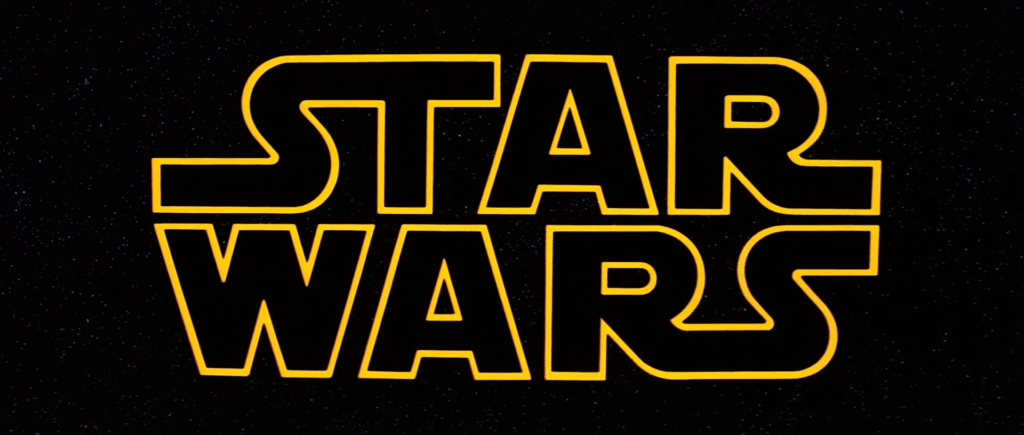
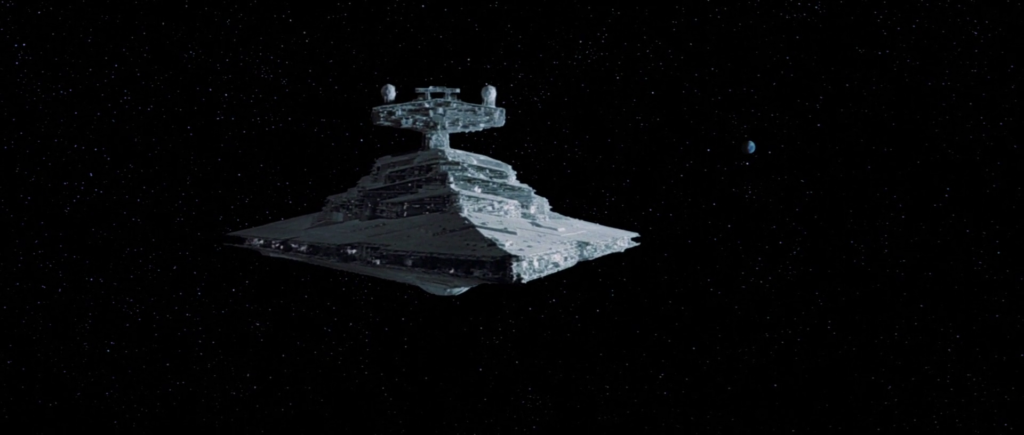
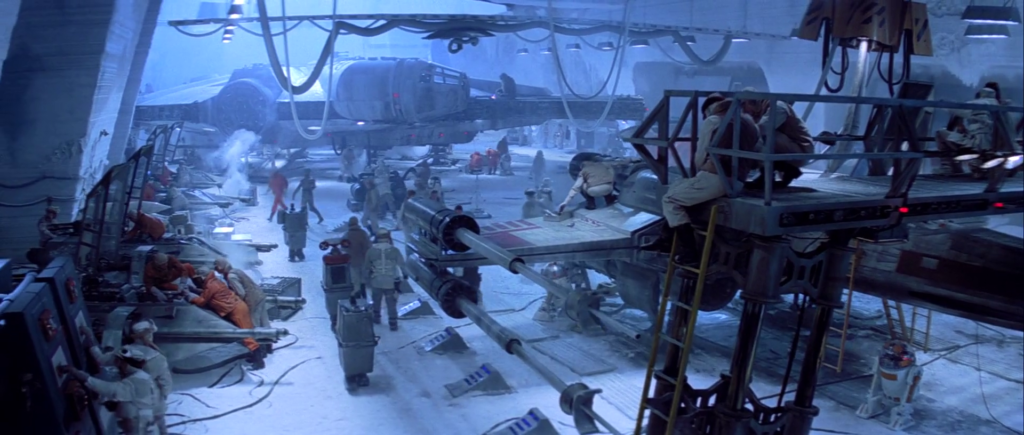

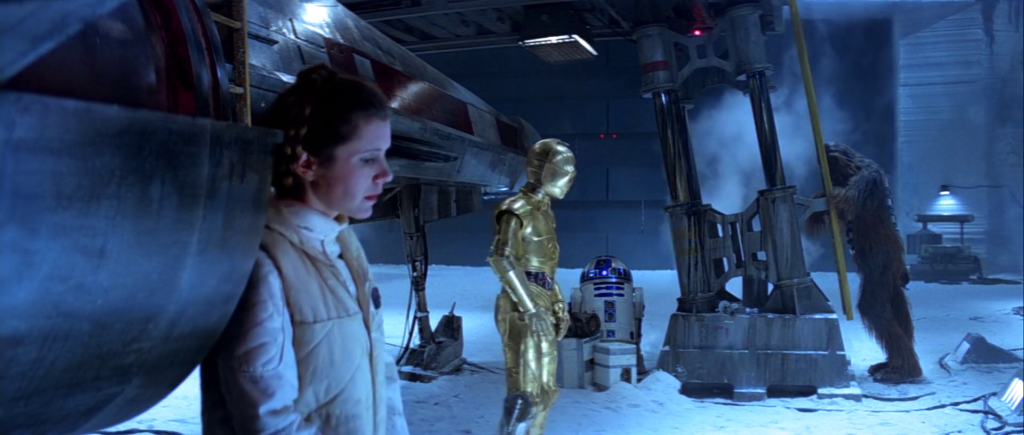
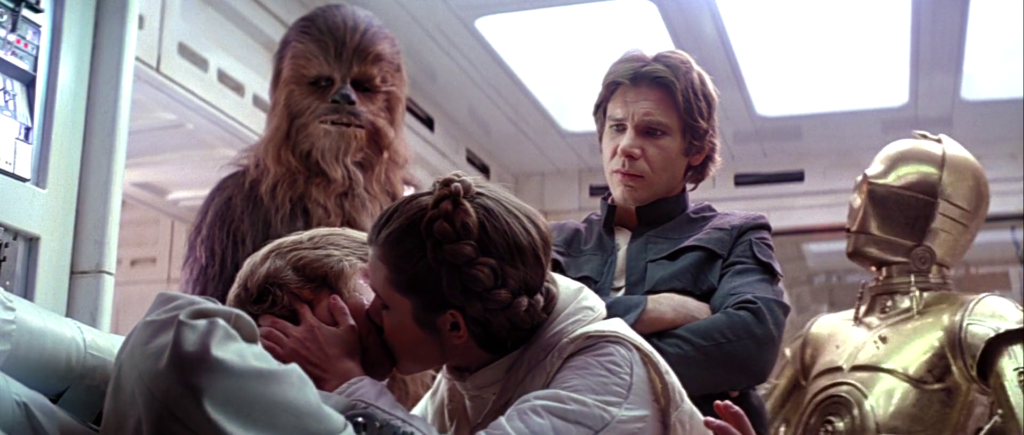
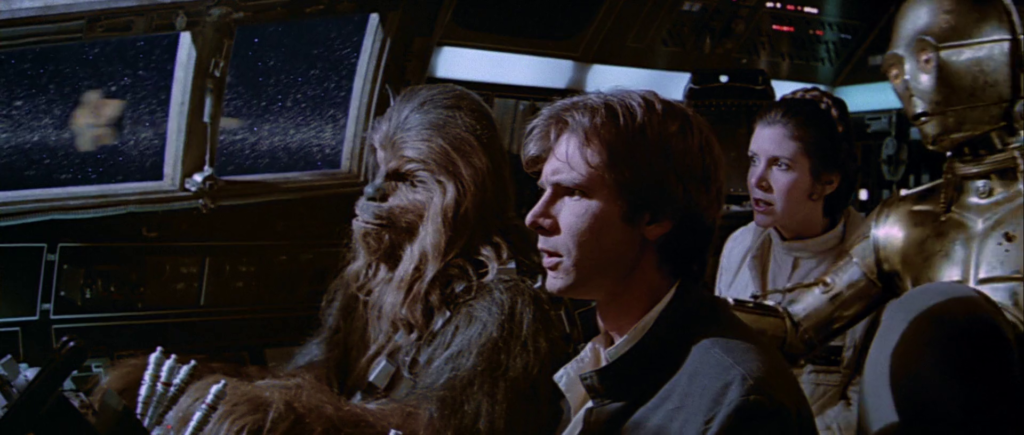
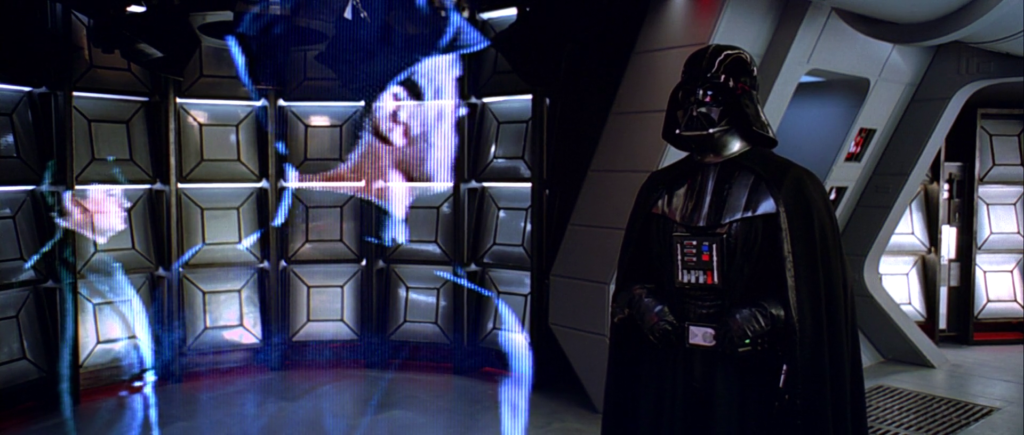
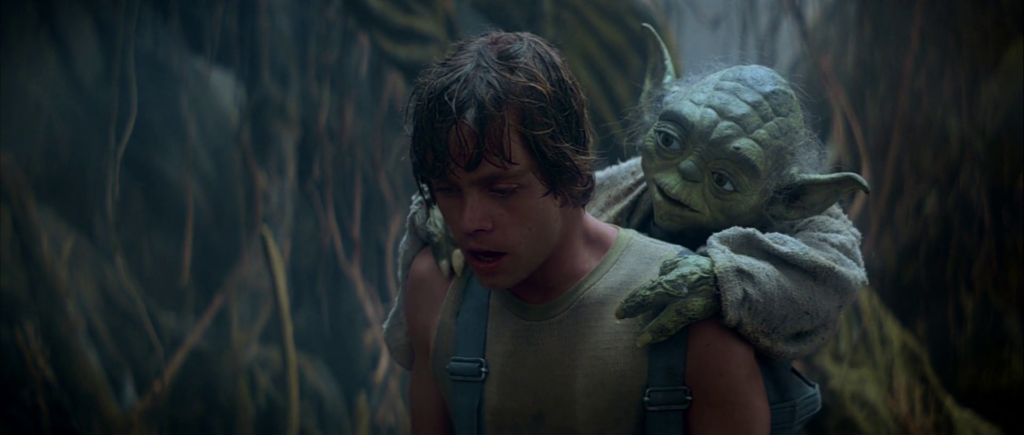

Star Wars Episode V: The Empire Strikes Back (1980)
Film review #507
Director: Irvin Kershner
SYNOPSIS: Three years after the rebel alliance successfully destroyed the galactic empire’s death star battlestation, the empire has been mercilessly hunting down the rebels and chasing them across the galaxy. The empire has chased them to their latest base in the Hoth system, and begin their assault. Luke Skywalker finds he must fulfil his destiny to become a true Jedi, and his friends evade pursuit from the empire as the stakes are elevated for all of the heroes…
THOUGHTS/ANALYSIS: Star Wars Episode V: The Empire Strikes back is a 1980 sci-fi film and the sequel to the original 1977 film Stars Wars Episode IV. Set three years after the events of the previous film, we find the heroes of the first film hiding out on an ice planet with the rest of the rebel alliance, with the Empire in pursuit. Following their success at the end of the previous film, the title of the film quickly comes to fruition, with the evil galactic empire striking back with overwhelming force. It contrasts quite a bit with the ending of Episode IV, which felt very much like a decisive victory, but then again had Darth Vader survive and showed nothing of the fallout from the Rebel’s victory. The idea of there even being a sequel after the first one was very much in doubt, so it’s fair that there would have been a lack of foreplanning in that regard. The Empire Strikes Back immediately raises the stakes in the opening act, and thrusts our heroes back into action, giving them new motivations and resolve. There’s very little breathing room in the film’s script, and nearly every moment is filled with action and energy. From a story standpoint you could probably cut the Hoth battle down fairly easily, but it’s more of a spectacle than a story impetus, and opening the film with a big action sequence will quickly satisfy those looking for an entertaining film rather than hard science-fiction. Another vast improvement in the story is how the story isn’t stringed together by a series of huge conveniences of characters being in the right place at the right time. There’s a bit of that (Such as Luke happening to crash land at the exact part of a whole planet where Yoda is), but otherwise it’s not much of an issue here.
When Empire Strikes Back was released, it received very mixed reviews: the change in tone from a more simplistic good vs evil story to a more complex world-building and darker tone might have alienated those who were simply looking for more of the same. However, that opinion has shifted quite significantly over the years, becoming a model for how sequels should be made. The film ups the stakes, builds the world, and shifts the tone to provide a new experience. The changes won’t be for everyone, but some amount of change is necessary to keep things fresh and justify actually making a sequel. Furthermore, this film has become regarded as one of the best in the series for these reasons, and it’s accomplishment in turning a fairly simple story into a franchise. The darker tone might be seen as symbolic that the series has “grown up” in some way, and that certainly seems to be what The Empire Strikes Back has been going for.
One thing that I noticed right away with regards to the characters is that even though three years have supposedly passed between this film and the last, the main characters don’t really seem to have changed in those three years. Their relationships all seem to be at a standstill waiting for this film to start. For example, the Luke-Leia-Han love triangle still seems to be a thing, which is something that seems an odd thing to string along for three years. Also that Han has still not paid Jabba the Hutt the money he is owed, despite it being stressed that it was a bit of an urgent matter previously. Apart from that, we get to see more of the character’s backstories and development, where they really start to emerge from their typical roles. Mark Hamil definitely delivers a much better performance than in A New Hope, and it’s clear to see he has been working on his skills. The new characters Yoda and Lando add in some more complexities, and Yoda is played very straight, contrasting with his appearance and clownish antics when he first appears. Obviously the big revelation that (spoilers) Vader is Luke’s Father is the biggest twist in the film, it’s definitely just a sting at the end of the film that sets the stage for the ending, with the heroes on the back-foot and out of options, ready for a redemption in the sequel. We still know very little about Luke’s Father with regards to what he did or who he was, so it doesn’t really change what we know in terms of the story, but yes it is definitely a high drama moment.
The film keeps the very distinct aesthetic divisions between the Empire and the rebels, with the sleek, clean Empire ships contrasting with the more dishevelled, cobbled together Rebel devices. The sets have plenty of detail and complexity to build its world. It gives sci-fi fans plenty of spaceships, lasers, and the like, while still having a sensible story to follow. As I’ve mentioned before, I’m not a Star Wars fan, and there’s probably no film that is going to make me change my mind. The flaws I see in this film stick out because of this, but I can also see how this film works as a successful sequel: it expands the world, deepens the characters, and raises the stakes to give you more of what you like (if you already like it).
-
#500 – Star Wars Episode IV: A New Hope (1977)
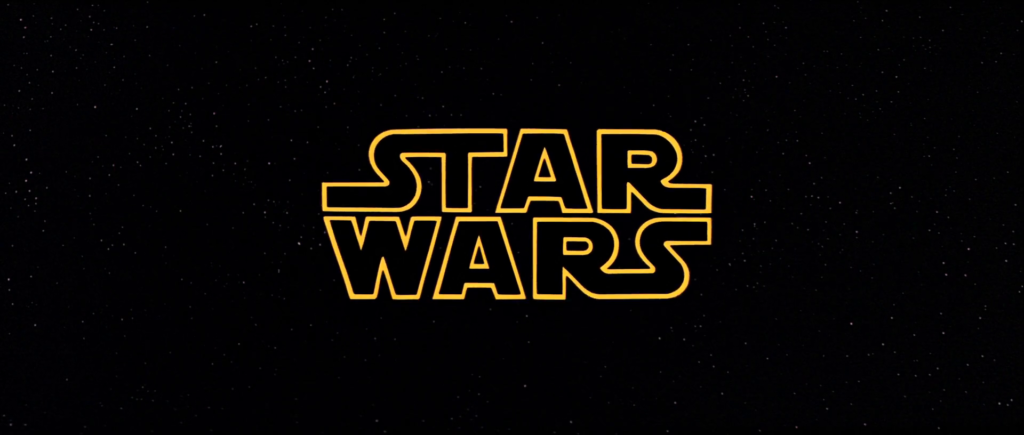
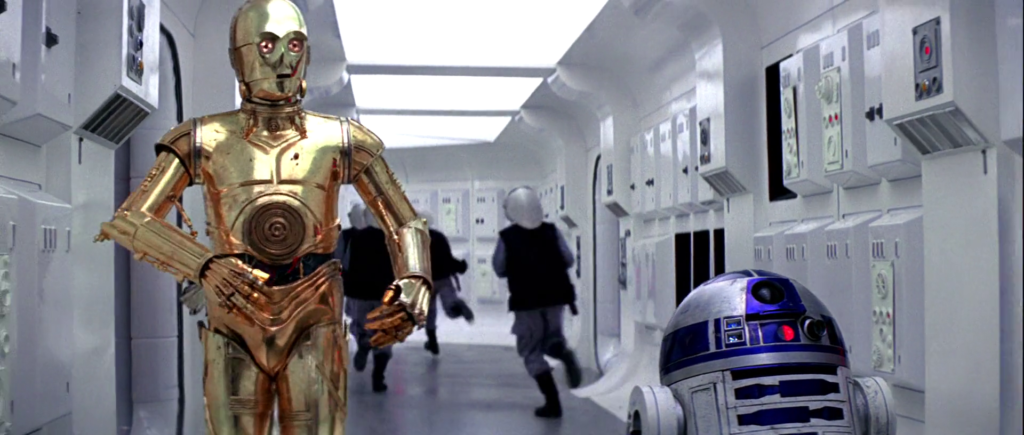
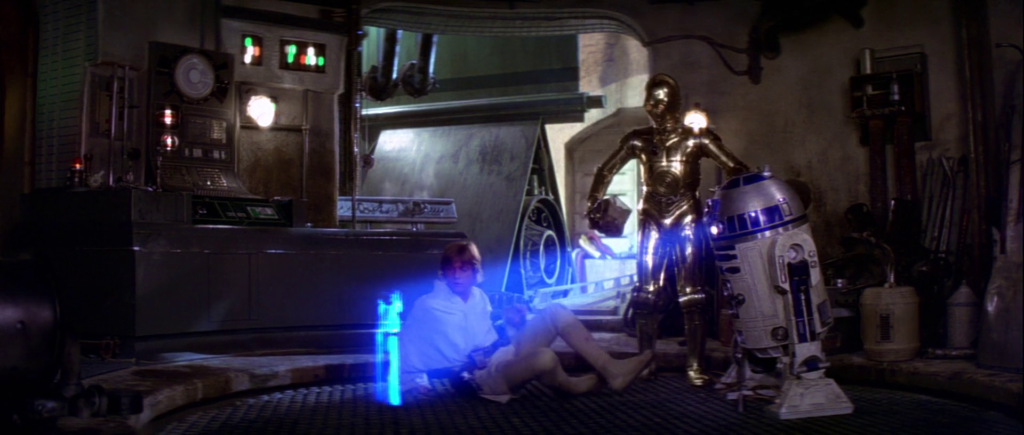
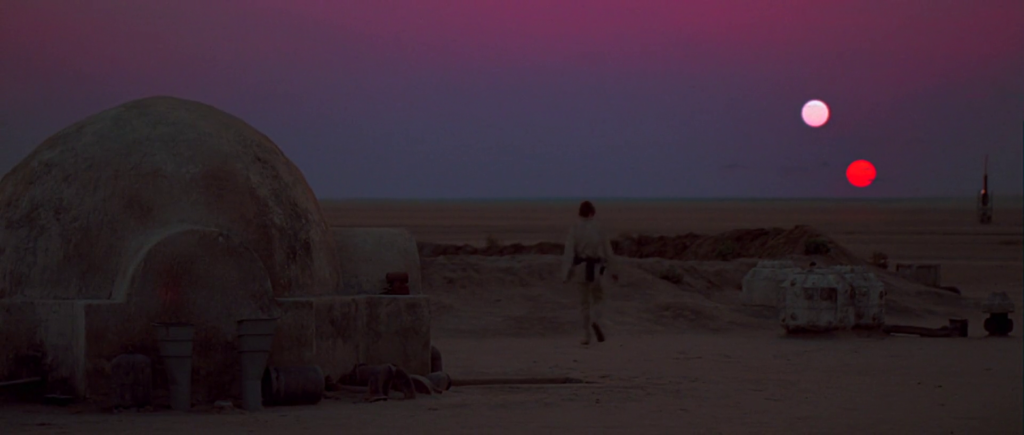
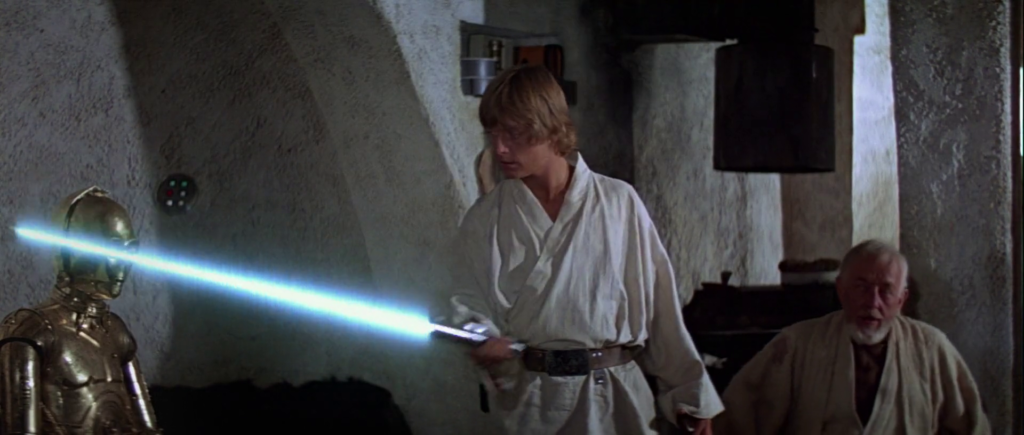
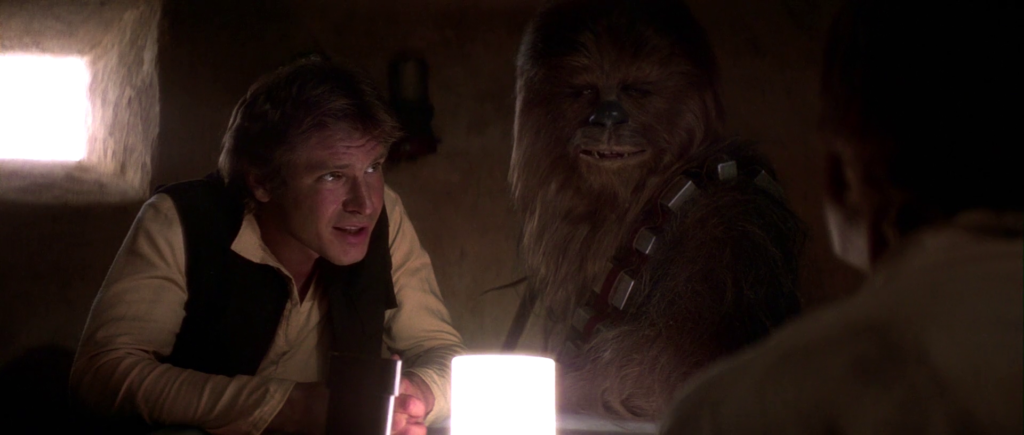
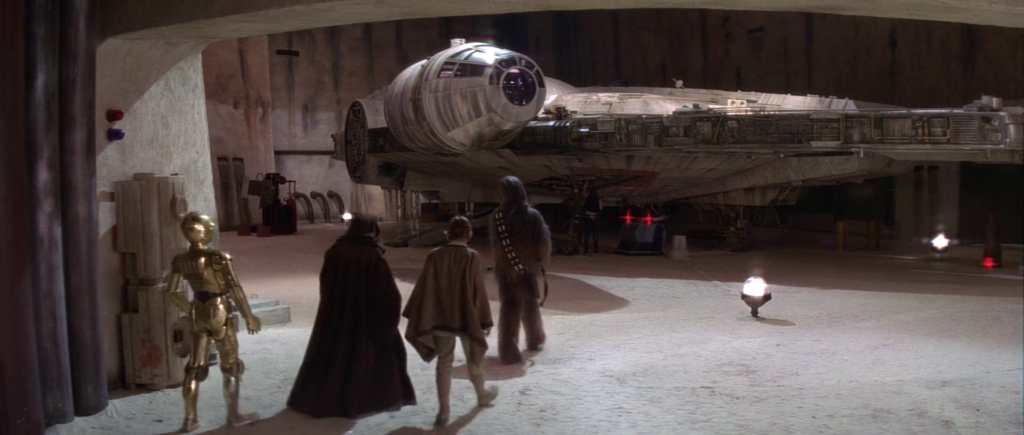
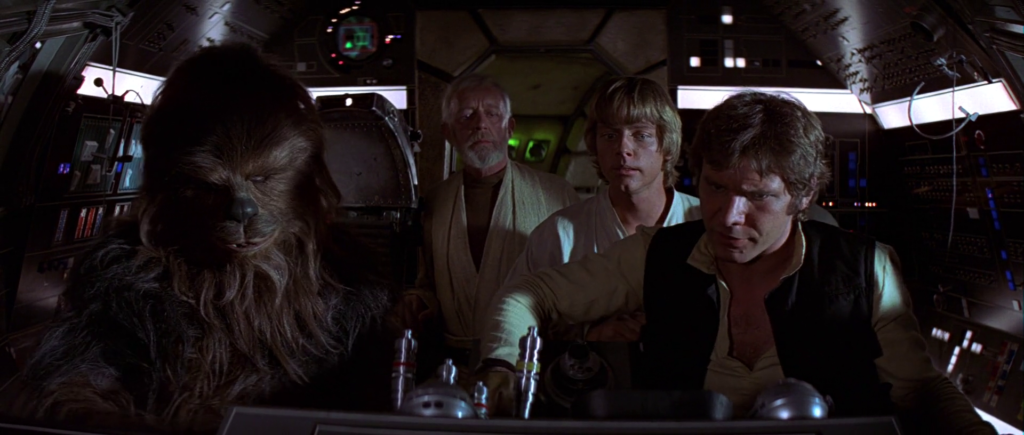
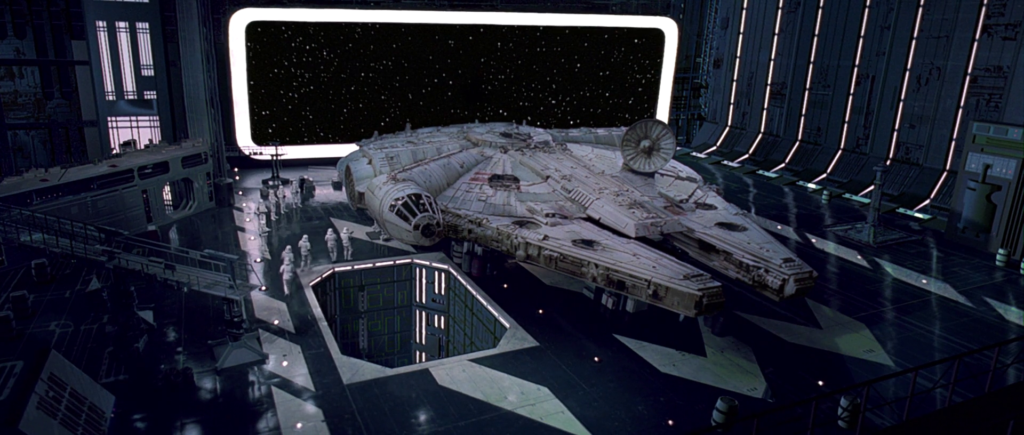
Star Wars Episode IV: A New Hope (1977)
Film review #500
Director: George Lucas
SYNOPSIS: A long time ago, in a galaxy far away…the plans for the evil galactic empire’s new battle station are stolen by the rebel alliance and placed in a droid to escape to the planet Tatooine. Luke Skywalker comes into possession of the droid and discovers a hidden message about the plans. With the droids in tow, Luke sets off to find Obi-Wan Kenobi and learn the ways of the force to bring down the empire, led by the ruthless Darth Vader…
THOUGHTS/ANALYSIS: Happy 500th film review! It’s been a long road to get here, and many hours have been invested into watching the best and worst (mostly the worst) of science-fiction films from all over the world over the last ten years. The plan was always to save this one for the 500th review, because I have famously never watched any Star wars film all the way through, and I have never had any real interest in the franchise, so this is a big milestone for me. So let’s take a look at why the film was so successful, why I was never interested in it, and whether actually watching the film has changed my mind shall we?
Star Wars (subtitled Episode IV: A New Hope after the initial cinema release) is a 1977 science-fiction film directed by George Lucas. It is the first film released in the Star Wars franchise. The film starts off throwing us right in the middle of a story, as outlined in the title crawl: the rebels fighting the evil galactic empire have uncovered the plans for their ultimate weapon: a gigantic space station that can destroy planets. Princess Leia hides the plans in a droid, which is then sent to the planet Tatooine and picked up by a young farm hand named Luke Skywalker. Determined to deliver the message and plans to one Obi-Wan Kenobi, and embark on an adventure to save the galaxy. Originally released as a stand-alone film, Star Wars really throws you right into this “galaxy far away” without much establishing. However, as the film opens up with an entertaining action sequence that shows off the world and its inhabitants better than any exposition could do. The story is pretty much a simple “good vs evil” plot, and I feel like it’s a waste of time trying to find any deep allegories in the world or characters. maybe George Lucas tried to build something more deeper and significant in his constant re-edits (more on that later), but taking the film as a stand-alone feature, it sets its scene around it’s characters fine, but when they talk about the galaxy at large with regards to the senate or whatever, we don’t see or hear much about it, which is a bit disjointing. Personally, I was never too interested in the world-building of Star Wars as this “galaxy far away” was a bit too disconnecting for me as a kid, and especially with their being humans there as well just made no sense. Maybe it’s a small point to get hung up on, but that was the kind of kid I was.
So after the first action scene, we start following the two droids that escape with the plans: C3PO and R2D2. We follow them for…quite a while actually: nearly half an hour of their bickering back and forth before the film moves on. honestly, I think the beginning could have been easily shortened to improve the flow of the film. If the aim was to show the droids and how they fit into the world, then there is certainly some of that in the beginning, but it isn’t really furthered in the latter part of the film. for example, there seems to be a deliberate show of how droids are treated as second-rate beings by humans in the beginning as if droid discrimination is rife in this galaxy, but it is completely forgotten about when the human characters become the centre of the story, and never confronted in the film. Maybe it would have been good for the contribution the droids made in defeating the empire could have been recognised and changed people’s attitudes towards them, but that doesn’t happen. Again, the film is basically a good vs. evil story that introduced a lot of things in passing, but were further explored in subsequent films and other media.
One thing I noticed about the story is a lot of the plot points are strung together by a chain of massive conveniences. The droids are on a ship, which coincidentally has the man they need to find, and are caught and sold to Luke, who just so happens to know Obi-Wan Kenobi, and so on. It’s not really an organic method of storytelling that is quite absurd the more you think about it, and that’s even before you take into account the lore from the prequels and how Obi-Wan should know who C3PO and R2D2 etc.
It is well known that George Lucas was inspired by watching the film serials of the 40s and 50s when he was a child, and that heavily influenced the likes of Star Wars and Indiana Jones. The fairly simplistic nature of the Star Wars “Good vs. evil” story does feel like it could have been the basis of such a serial. The characters too, are reminiscent of that: the characters are all white men, with one woman in the entire cast. Luke is the “blank slate” protagonist that people are to identify and project themselves into as he explores this new world with the viewer. Han Solo is the more typical, action-focused lead, and Leia is the only female character that unsurprisingly needs to be rescued. Darth Vader takes the role of the “masked villain” whose identity was often kept secret until the last chapter of the serial. His appearance is also highly reminiscent of the serial villain “The lightning” from The Fighting Devil Dogs: Who could fire lightning from his hand (A power not shown in this Star Wars film, but is in others), and flies around in a triangular plane that you could say is similar to the “star destroyer” ships seen in Star Wars. It’s difficult to say just how much of an influence these had, given that there would have been no way to re-watch these serials or dig up any information back in 1977 when there was no home releases, but the similarities are way to striking in some regards to be dismissed as coincidence. There is some effort to give some of the characters a more unique personality: Han Solo has a bit of an anti-hero edge that’s not too unique, but his character and performance by Harrison Ford are definitely memorable. Princess Leia too, while still being the sole female character that needs to be rescued from being kidnapped, but her snide remarks, constant backtalking and her eagerness to get stuck in the action with the guys definitely set her apart from the trope she finds herself in. I’m not sure the title of “princess” really helps her character in this respect though, as it isn’t really explained what or where is is supposed to be a princess of. nevertheless, Carrie Fisher’s performance is definitely a stand out from an acting perspective.
There was apparently very little faith in Star Wars being a success, and George Lucas was given a “small” budget of eleven million dollars to work with, which in 1977, while not a big budget, is not nothing. What the film creates is a very unique aesthetic: not the pure, sterile white that is expected from sci-fi (most of the time), but a world covered in grime and dirt, and that feels lived in. The detailed textures on the models of the ships really bring the scenes to life, and it’s pretty impressive how much detail they get on them. there’s definitely a distinct vision in the film’s aesthetic, and for the most part, it is brought to life with no big complaints. The big budget film score by John Williams also provides a lot of memorable acoustic moments.
I should probably mention something about the edits to this film: George Lucas has made many modifications to this film is particular since it was released as a standalone film in 1977. Some of them are cosmetic and actually enhance the world, such as recolouring and adjusting contrast on some of the scenes and models, which I think helps them stand out a lot better. Some of the additions though are pretty pointless, and sometimes harmful to the film. The constant reworking of Han shooting Greedo first is infamously silly and in my opinion just didn’t need to be done. The added CGI characters in some of the establishing shots look really outdated and out of place in the film, and while I get that they are there to make the world more busy, it just ends up being distracting. The added scene with Jabba the Hutt was cut from the original, which I think made sense, as it messes up the reveal of the Millennium Falcon when we see it with Luke for the first time. Out of all the changes, I still don’t get why all the dialogue with Luke being attracted to Leia wasn’t altered or removed, since it’s just weird when we know they are revealed to be siblings in the sequels (spoilers, sorry). I know that they also don’t have any idea about their relation (I don’t think they were supposed to be related when the film was written, but it still seems a bit odd that the whole thing has been left untouched while so much of the rest of the film has been cosmetically altered for no real benefit.
Overall, Star Wars Episode IV: A New Hope is a perfectly serviceable film about good versus evil in a science-fiction setting. It has it’s own unique aesthetic and vision, and adds in enough character development and drama to make it interesting for viewers of all demographics. the influence it had is undeniable: it was a landmark moment in sci-fi that allowed the genre to be taken seriously again, after the low budget, b-movie monster films of the 60’s. However, I do still hold the opinion that part of that was good timing on the film’s release, rather than anything in particular that the film accomplished: it was expected to be a mediocre performer that no one wanted to take a chance on, and I think science-fiction fans were waiting for a film like Star Wars to get into. watching the film properly hasn’t changed my opinion of the franchise, and I’m not suddenly interested in watching the other films or exploring the franchise (although I will get around to viewing the other films eventually), but yes, it is a decent sci-fi film that breathed new life into the genre and was able to fire people’s imaginations, as well as being entertaining. There are plenty of problems with it though, such as the ridiculous reliance on chance encounters for plot convenience, some wobbly acting in parts, and pacing, so all in all, it has done little to sway me, but I see why people would and could enjoy it.
